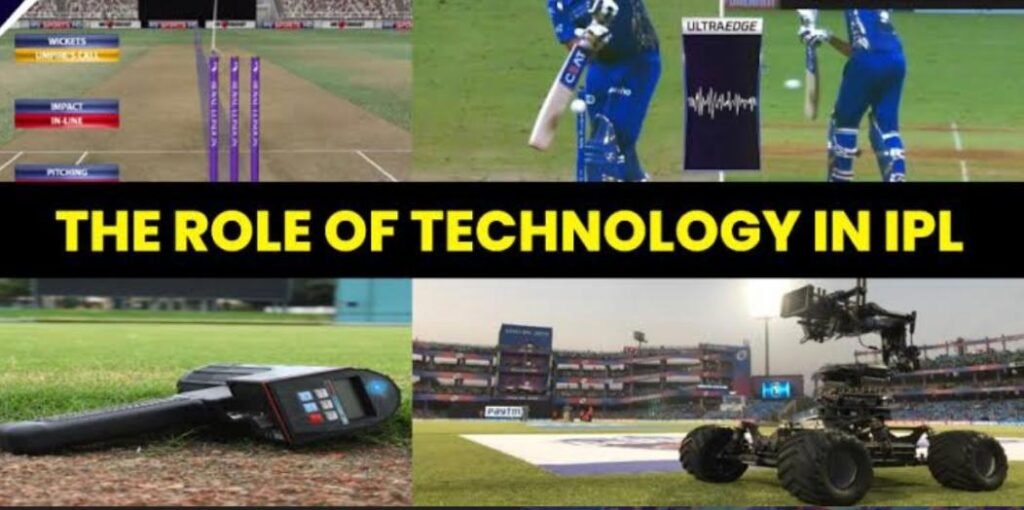The Indian Premier League (IPL) has consistently been at the forefront of innovation, both in terms of cricket entertainment and technology. Over the years, we have witnessed the gradual integration of technological advances into umpiring decisions, transforming the way matches are officiated. As IPL 2024 progresses, the impact of technology on umpiring decisions becomes more apparent than ever before.

Here, we’ll explore the various technologies that are shaping umpiring decisions in IPL 2024 as well as their implications for the game.
Decision Review System (DRS):
The Decision Review System (DRS) has become a ubiquitous feature in modern cricket, and IPL 2024 is no exception. DRS allows players to challenge on-field decisions by referring them to the third umpire, who uses various technological tools to review the decision. This includes ball-tracking technology to determine the trajectory of the ball, ultra-motion cameras to capture ultra-slow-motion replays, and a Snickometer to detect faint edges off the bat. DRS has significantly reduced the margin of error in umpiring decisions and has led to fairer outcomes on the field.
Hawk-Eye Technology:
Hawk-Eye technology is another game-changer in umpiring decisions, particularly in determining the trajectory of the ball and predicting its path. In IPL 2024, Hawk-Eye technology is used to assist umpires in making LBW (Leg Before Wicket) decisions. By tracking the trajectory of the ball from the point of impact with the bat or pad, Hawk-Eye provides valuable insights into whether the ball would have gone on to hit the stumps. This technology has added a new dimension to umpiring decisions, especially in close LBW calls, and has contributed to more accurate decision-making.
Read More:- How Much Mobile Data Do You Need to Stream IPL 2024?
Ultra-High-Definition (UHD) Cameras:
In IPL 2024, the use of ultra-high-definition (UHD) cameras has revolutionized the way umpires assess catches and boundary-line decisions. UHD cameras provide crystal-clear footage of crucial moments in the game, allowing umpires to make more informed decisions. Whether it’s determining whether a fielder has taken a clean catch or whether a batsman’s foot has touched the boundary rope, UHD cameras provide the clarity and detail needed to make accurate calls. This technology has enhanced the integrity of umpiring decisions and has helped maintain the spirit of fair play in the IPL.
Real-Time Snickometer:
The introduction of real-time Snickometer technology in IPL 2024 has been a game-changer in detecting faint edges off the bat. Snickometer uses sensitive microphones placed around the field to pick up sound waves generated by the ball brushing against the bat. By analyzing the timing and frequency of these sound waves, Snickometer can determine whether the ball has made contact with the bat. This technology has been instrumental in resolving contentious caught-behind decisions and has provided umpires with additional evidence to make informed judgments.
Player Tracking Systems:
Player tracking systems have become increasingly prevalent in IPL 2024, providing valuable insights into player movements and positioning on the field. These systems use GPS and motion-tracking technology to monitor players’ movements in real time, allowing umpires to assess run-outs, stumpings, and boundary-line decisions more accurately. By tracking the trajectory of the ball and the position of fielders relative to the boundary rope, player tracking systems help umpires make quick and informed decisions, thereby minimizing errors and controversies.
Technology has had a profound impact on umpiring decisions in IPL 2024, ushering in a new era of accuracy, transparency, and fairness. From the implementation of DRS to the use of ball-tracking and sound-based technologies, cricket has witnessed a transformation in the way decisions are made on the field.
As technology continues to evolve, we can expect further innovations in umpiring technology, ensuring that the IPL remains at the forefront of technological advancement in cricket.
Disclaimer: The above information is a result of research and Axpert Media is not responsible for errors in the same.
